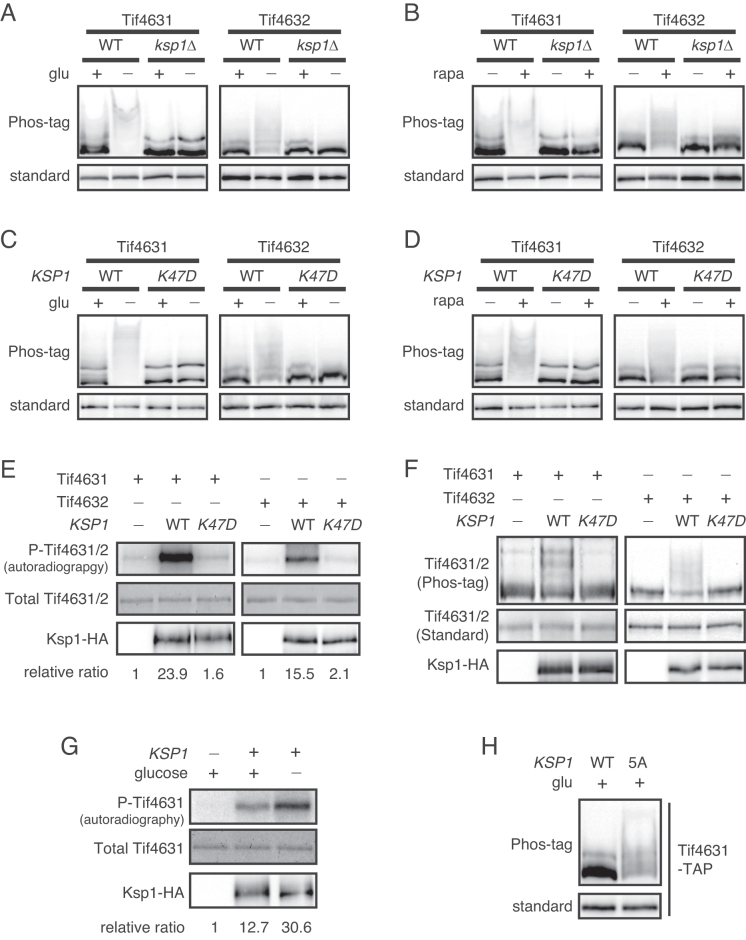Figure 3.
Ksp1 is a novel kinase of eIF4G. (A and B) Phosphorylation of eIF4G in ksp1Δ cells. KSP1 was deleted from TIF4631-TAP and TIF4632-TAP strains. (C and D) Phosphorylation of eIF4G in cells expressing the kinase-dead allele ksp1-K47D. KSP1 (WT) or ksp1-K47D alleles were integrated into ksp1Δ cells expressing Tif4631-TAP or Tif4632-TAP. (E and F) In vitro kinase assay of Ksp1 with Tif4631 and Tif4632 as substrates. (E) In vitro kinase assay using radioisotope labeling. Upper panel, incorporation of 32P into substrates; middle panel, the amount of substrates visualized by Coomassie blue staining; lower panel, the amount of Ksp1 kinase. The relative ratio of phosphorylated Tif4631/Tif4632 to total Tif4631/Tif4632 is shown below each lane. (F) In vitro kinase assay using Phos-tag SDS-PAGE. Upper panel, western blotting of substrates using Phos-tag SDS-PAGE; middle panel, western blotting of substrates using standard SDS-PAGE; bottom panel, the amount of Ksp1 kinase. (G) In vitro kinase assay of Ksp1 purified under normal growth conditions and glucose deprivation conditions. Tif4631 was used to detect the activity of Ksp1 under each condition. The relative ratio of phosphorylated Tif4631 to total Tif4631 is shown below each lane. (H) Phosphorylation of Tif4631 in ksp1–5A mutant. KSP1 (WT) and ksp1–5A alleles were integrated into ksp1Δ cells expressing Tif4631-TAP, followed by western blot analysis.

